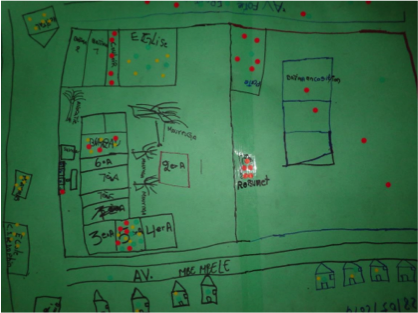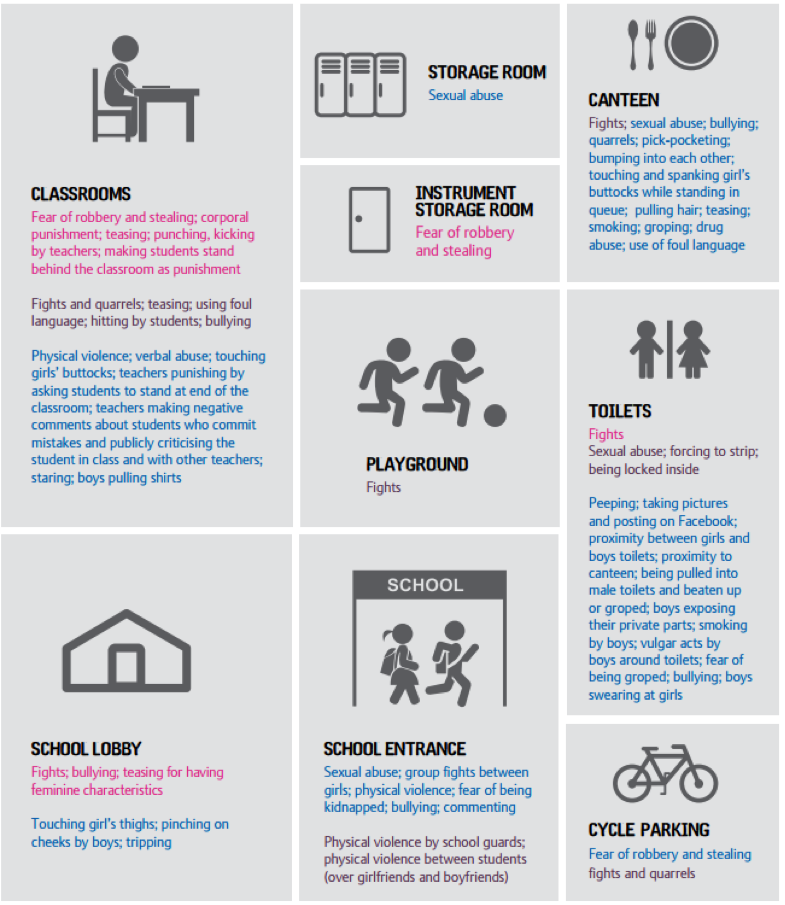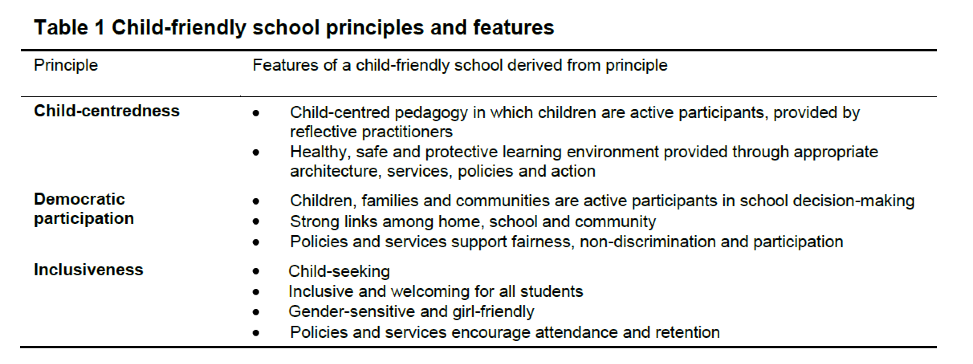Safe and welcoming schools
What is a safe and welcoming school?
A safe and supportive school has appropriate physical facilities, including school buildings, grounds, water and sanitation facilities, furniture, lighting and security equipment. While it is crucial to ensure that the physical infrastructure and spaces are safe, the school must also be welcoming to students, parents and others in the community to encourage accountability and engagement.
The school’s physical infrastructure is important as SRGBV can take place in and around school buildings, grounds and on the way to and from school. Hotspots for violence include toilets, empty classrooms, corridors and dormitories, as well as the perimeter of school grounds.
SRGBV can be exacerbated by poorly designed or managed infrastructure, such as dim lighting or broken locks, as well as physical isolation and inadequate supervision of facilities.
At the 57th Session on the Commission on the Status of Women, governments made a specific commitment to ‘improve the safety of girls at and on the way to and from school, including by establishing a safe and violence free environment’ by improving infrastructure such as providing private sanitation facilities with locks, improved lighting and playgrounds (UN Women, 2013a).
|
|
|
|
|
Practical action – How to ensure safe physical spaces in schools? An illustrative checklist |
|
School location, grounds and access routes |
o School built in location perceived to be safe by the local community (e.g. away from bars and areas with high crime rates). o Conduct safety audits of the school building, grounds and access routes to identify unsafe areas, taking into account the opinions of different groups of students (e.g. boys, girls, minorities, disabled students etc.). o Improve and maintain lighting in and around school grounds. o Use perimeter and access point fencing and monitoring, and clear bushes. |
|
Building and classroom design |
o Consider SRGBV and safety issues in the design of school infrastructure. o Ensure good visibility into educational spaces from the outside by maximizing the number/size of windows and doors in classrooms, offices and other spaces. |
|
Water, Sanitation and Hygiene (WASH) facilities |
o Separate, lockable toilets for boys, girls, men and women teachers/school staff. o Toilets should be in close proximity to the school in an open and visible location. o Provision of hygienic and safe sanitation disposal facilities. o Provision of space next to the toilets to change and wash menstrual pads. |
|
Monitoring and maintenance |
o Regular monitoring of spaces where children are most vulnerable to SRGBV (e.g. in or near latrines, in empty classrooms and hallways, the school perimeter) by school security, teachers, non-academic staff and students ‘on duty’ (with teacher supervision). o Regular checking and maintenance of broken lights, toilet facilities (including locks on doors) and security facilities. |
|
Transportation |
o Increase safety on the way to and from school. For example, by establishing ‘safe passage’ routes to and from school that are patrolled or safe, shared transport options. |
|
Source: Based on UN Economic and Social Council (2013); World Bank (2015) |
|
Welcoming schools are spaces where each member of the school community – student or staff – is made to feel equally valued; where individuals treat each other with respect; where principles of tolerance and diversity are promoted; where each student has an equal opportunity to learn and participate; and where systems are in place to enhance relationships of trust and support between learners and teachers. Schools that are perceived as welcoming to all students and staff can be described as having an ‘inclusive culture’, characterized by:
- the presence of leaders who are committed to inclusive values and to a leadership style that encourages a range of individuals to participate in leadership functions
- a high level of staff collaboration and joint problem solving
- similar values and commitments that may extend to the student body, and to parents and other community stakeholders in the school.
Research suggests that, in order to foster inclusive development, school leaders need to attend to three broad types of task: fostering new meanings about diversity; promoting inclusive practices within schools; and building connections between schools and communities (UNESCO-IBE, 2015).
In such an environment, students are not only better able to recognize situations of violence or abuse, but they also feel more comfortable to report to a trusted teacher or other adult any instance of violence or discrimination that they may have experienced or witnessed at school.
|
UNICEF’s Child-Friendly School model UNICEF’s Child-Friendly School model enables a holistic review and includes three key principles: child-centredness, democratic participation and inclusiveness, with each principle demonstrating certain features.
An evaluation of the model (UNICEF, 2009) found that, where the three principles had been applied fully, children felt more supported by and invested in by parents and teachers. Teachers and parents were also more engaged and the full school environment was more conducive to learning. Critical to these child-friendly schools are clear codes of conduct and reporting mechanisms that are developed cooperatively, and to which all members of the school community are committed.
Source: UNICEF (2009). Child-Friendly Schools Manual |
One useful tool that can be used by children to map school sites that they perceive to be unsafe is that of participatory mapping. The following are examples of participatory mapping, and its results, from the Democratic Republic of Congo (DRC) and Vietnam.

|
|
|
|
|
Practical action – How to use participatory mapping of unsafe sites and forms of violence experienced in school? |
|
|
Participatory mapping was used as part of a five-year, USAID-funded project in the DRC for the project, Empowering Adolescent Girls to Lead through Education (EAGLE). The following steps were taken:
The problems highlighted by students in the participatory mappings helped to inform school communities where to prioritize funding awarded to parents’ committees by way of small EAGLE-funded grants (FHI 360, 2014).
|
|
|
SRGBV “hotspots”: Research in Ghana, Malawi and Zimbabwe
In Ghana, Malawi and Zimbabwe, participatory research with children aged 10–14 at schools looked at places within and around the school where they felt safe and unsafe. In both countries, girls’ maps had more areas marked as unsafe, indicating that girls found the school environment a less secure, more threatening place than boys, highlighting that ‘hotspots’ for SRGBV were gendered: • Girls’ unsafe spaces included: the pupils’ toilets; boys’ playing field; teachers’ quarters; offices and playgrounds; and busy roads, with the main reasons being fear of being attacked by boys and men, and verbal/sexual harassment by boys, teachers and men from the community. • Boys’ unsafe spaces included: busy roads; girls’ toilets; girls’ playground; and the head teacher’s office and staff room, not out of fear for their own personal safety, but because these were areas that were out of bounds for them.
Source: Leach et al, 2003 |
The infographic below[V1] shows the results of a participatory mapping exercise with learners in Viet Nam. It shows how different spaces at the school site are gendered and how children experience different forms of SRGBV in those areas.
Infographic showing how school site is gendered in Viet Nam



Source: Plan International/ICRW (2015), p. 15
See Further resources on safe and supportive schools for more information and tools.

